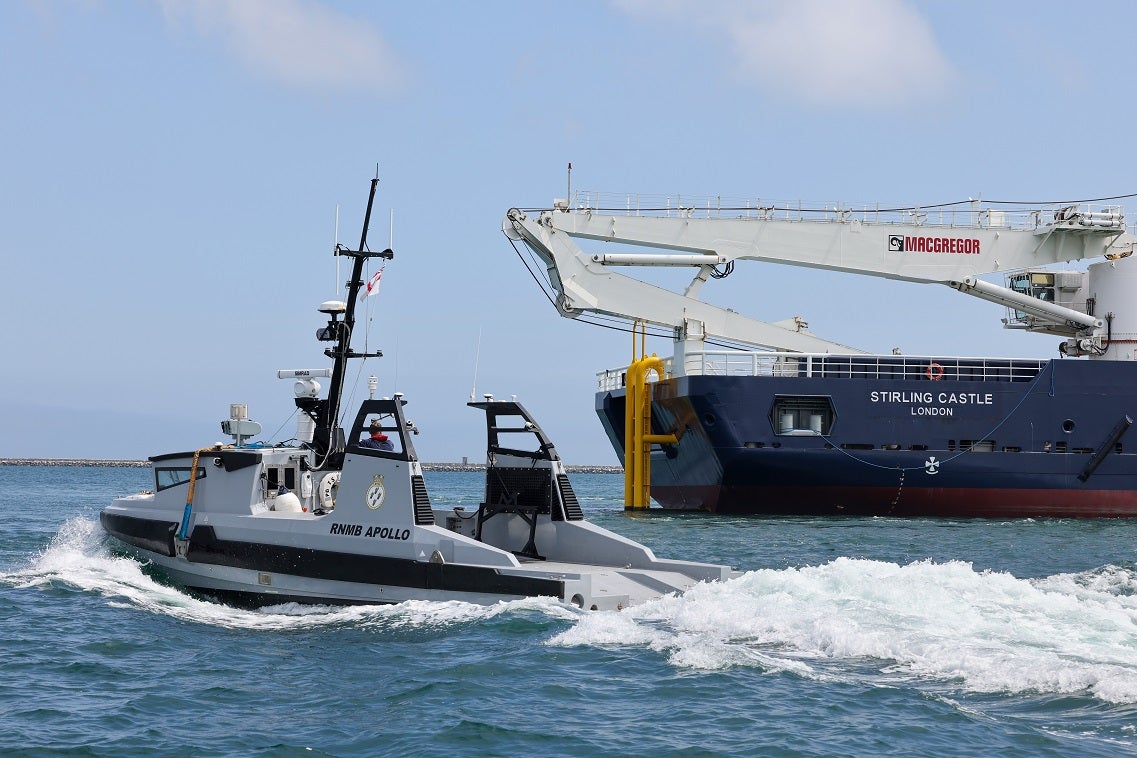
A minehunting “mothership” and autonomous vessels, procured by DE&S for the Royal Navy, have been trialled together for the first time, it was announced on 4 July.
RFA Stirling Castle, which can host a suite of autonomous mine hunting systems, was joined in Portland by Royal Navy Motor Boats Apollo, Hydra and Hazard for a series of tests.
When the Stirling Castle officially joins the RFA fleet following a naming ceremony in August, the ship will host autonomous vessels that can be remotely piloted during mine-countermeasure operations.
“This is an important step in the incremental development of maritime autonomous systems, exploiting new technology to increase performance and reduce risk to sailors,” said Andy Lapsley, DE&S Mine Hunting Capability (MHC) Team Leader. “This event was a truly collaborative endeavour across various DE&S departments, the Royal Navy, the Royal Fleet Auxiliary and industry partners. It paves the way for significant advances in the global deployment of this capability.”
Stirling Castle became a member of the Royal Auxiliary Fleet in order to serve as a “mothership” for autonomous minehunting systems. When fully operational, the ship will launch and recover the vessels, as well as analyse the data they collect while searching for mines and underwater explosive devices in their home waters.
As a result, the ship and autonomous boats will begin to replace traditional mine countermeasures vessels, instead relying on a suite of advanced payloads from a Remote Command Centre, such as towed sonars and remotely-operated neutralisation systems.
The Portland trials are the most recent in the Royal Navy’s Mine Hunting Capability Programme. It builds on separate work to develop the primary systems of the Maritime Mine Counter Measure, amounting to a technological leap for the future of mine hunting operations.
“These trials marks a key milestone in the delivery of the Royal Navy’s Mine Hunting Capability programme,” said Rear Admiral Ivan Finn, Director Navy Acquisition. “Following her rapid procurement and delivery at the start of the year, RFA Stirling Castle has now embarked her first autonomous mine countermeasures systems.
“This has been achieved through the hard work of her ship’s company, the Maritime Autonomous System Trials Team, the Defence Equipment and Support delivery team, and our industry partners. The Royal Navy can now look forward to having Maritime Autonomous Systems permanently embarked and ready for operations over the coming months.”
A recent trail in the Arabian Gulf with the RFA Cardigan Bay engaged in autonomous mine countermeasures had been trialled with the Royal Navy Motorboat Harrier, an 11m uncrewed boat capable of detecting underwater threats as part of autonomous mine-hunting operations in the Gulf.








